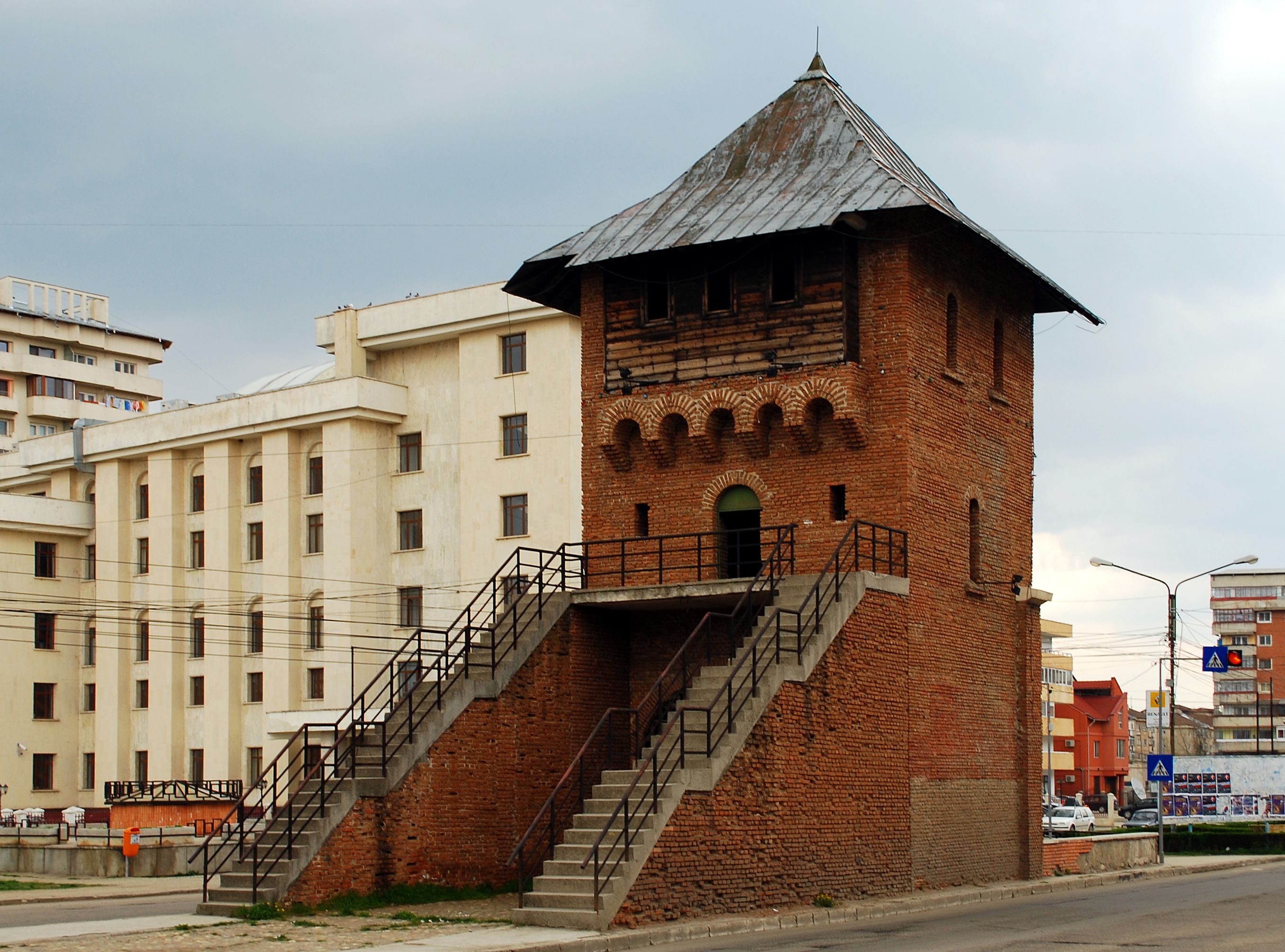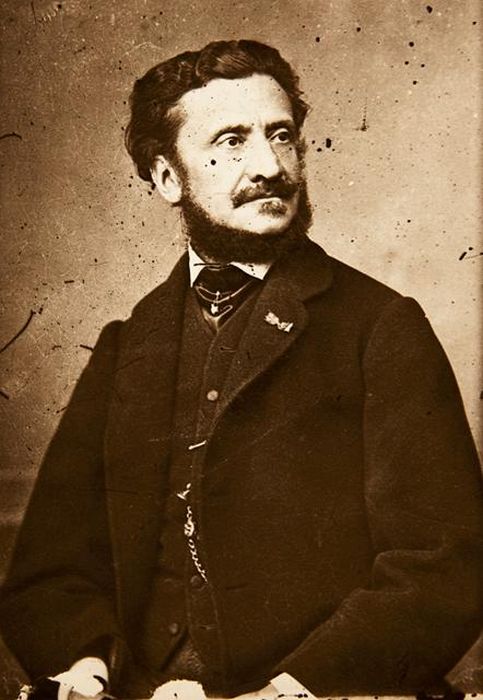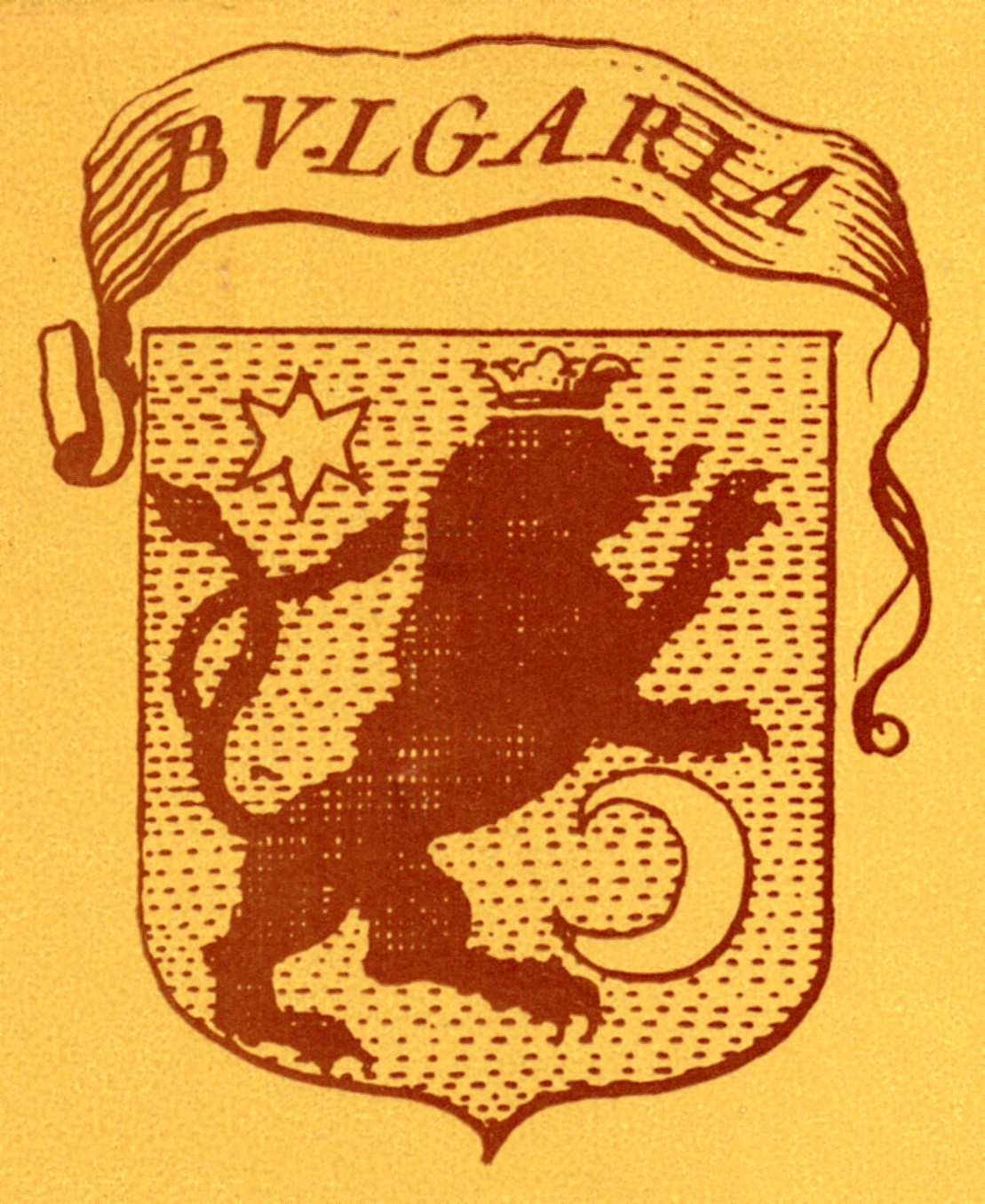|
Chindia Tower
The Chindia Tower ( ro, Turnul Chindiei) is a tower in the TΟΔrgovi»ôte Princely Court, Curtea DomneascΡÉ monuments ensemble in TΟΔrgovi»ôte, Romania, built in the 15th century. The tower was begun during the second reign of List of Wallachian rulers, Prince Vlad III the Impaler over Wallachia and took its final form during the 19th century. It initially had a military purpose, but during its history, it has been used as a guard point, a fire spotter, and for storing and protecting the state treasury. Between 1847 and 1851, the Chindia Tower was completely restored by Gheorghe Bibescu who added to its height. The building in its current form has a height of and a diameter of . The Chindia Tower, the most important tourist attraction in TΟΔrgovi»ôte, is considered the city's symbol; the tower elements are present in the city's emblem, at the top and also at the bottom. As a monument the tower now houses an exhibition of documents, weapons and objects which belonged to Vlad the Imp ... [...More Info...] [...Related Items...] OR: [Wikipedia] [Google] [Baidu] |
TΟΔrgovi»ôte
TΟΔrgovi»ôte (, alternatively spelled ''TΟ°rgovi»ôte''; german: Tergowisch) is a city and county seat in DΟΔmbovi»¦a County, Romania. It is situated north-west of Bucharest, on the right bank of the Ialomi»¦a River. TΟΔrgovi»ôte was one of the most important cities in the history of Wallachia, as it was its capital between the early 15th and 16th centuries. At the 2011 census, the city had a population of 79,610 people, making it the 26th largest in the country. Name The name ''TΟΔrgovi»ôte'' is a Slavic name which the city acquired in the Middle Ages. It is derived from the old Slavonic word for "marketplace", referring to the place rather than the market itself. The name is found in placenames not only in South Slavic areas (Bulgarian Targovishte, –Δ―ä―Ä–≥–Ψ–≤–Η―â–Β, Serbian Trgovi≈Γte, –Δ―Ä–≥–Ψ–≤–Η―à―²–Β and Croatian ''Veliko Trgovi≈ΓΡ΅e''), but also in West Slavic such as Slovak ''Trhovi≈Γte'' or Polish ''Targowica, Lower Silesian Voivodeship, Targowica''. Additionally, ... [...More Info...] [...Related Items...] OR: [Wikipedia] [Google] [Baidu] |
Towers In Romania
A tower is a tall structure, taller than it is wide, often by a significant factor. Towers are distinguished from masts by their lack of guy-wires and are therefore, along with tall buildings, self-supporting structures. Towers are specifically distinguished from buildings in that they are built not to be habitable but to serve other functions using the height of the tower. For example, the height of a clock tower improves the visibility of the clock, and the height of a tower in a fortified building such as a castle increases the visibility of the surroundings for defensive purposes. Towers may also be built for observation, leisure, or telecommunication purposes. A tower can stand alone or be supported by adjacent buildings, or it may be a feature on top of a larger structure or building. Etymology Old English ''torr'' is from Latin ''turris'' via Old French ''tor''. The Latin term together with Greek œ³œçœ¹œÉΈΙœ² was loaned from a pre-Indo-European Mediterranean langua ... [...More Info...] [...Related Items...] OR: [Wikipedia] [Google] [Baidu] |
Buildings And Structures In TΟΔrgovi»ôte
A building, or edifice, is an enclosed structure with a roof and walls standing more or less permanently in one place, such as a house or factory (although there's also portable buildings). Buildings come in a variety of sizes, shapes, and functions, and have been adapted throughout history for a wide number of factors, from building materials available, to weather conditions, land prices, ground conditions, specific uses, prestige, and aesthetic reasons. To better understand the term ''building'' compare the list of nonbuilding structures. Buildings serve several societal needs βÄ™ primarily as shelter from weather, security, living space, privacy, to store belongings, and to comfortably live and work. A building as a shelter represents a physical division of the human habitat (a place of comfort and safety) and the ''outside'' (a place that at times may be harsh and harmful). Ever since the first cave paintings, buildings have also become objects or canvasses of much artisti ... [...More Info...] [...Related Items...] OR: [Wikipedia] [Google] [Baidu] |
Carol Szathmari
Carol Szathmari (Romanian: ''Carol Popp de SzathmΟΓry ''; 11 January 1812 KolozsvΟΓr – 3 July 1887 Bucharest) was a Hungarian painter, lithographer, and photographer, who had worked most of the time in Wallachia, nowadays Romania and therefore he is considered to be the founder of the Romanian photography. He is also considered the world's first combat photographer for his pictures of the battlefield taken during the first year of the Russo-Turkish war, later known as the Crimean War. Life Szathmari was born in the city of KolozsvΟΓr, Transylvania (now Cluj-Napoca, Romania), in 1812. Initially, he studied law at the Reformed College in Cluj.http://www.eshph.org/wp-content/uploads/2015/12/2008_Jubilee_lowres.pdf By the age of eighteen he had moved to Bucharest. He studied painting from 1832 to 1834 in Rome, and on returning to Bucharest he was frequently commissioned to create paintings for the Wallachian boyars. He would later go on to achieve notoriety as the official ar ... [...More Info...] [...Related Items...] OR: [Wikipedia] [Google] [Baidu] |
France
France (), officially the French Republic ( ), is a country primarily located in Western Europe. It also comprises of Overseas France, overseas regions and territories in the Americas and the Atlantic Ocean, Atlantic, Pacific Ocean, Pacific and Indian Oceans. Its Metropolitan France, metropolitan area extends from the Rhine to the Atlantic Ocean and from the Mediterranean Sea to the English Channel and the North Sea; overseas territories include French Guiana in South America, Saint Pierre and Miquelon in the North Atlantic, the French West Indies, and many islands in Oceania and the Indian Ocean. Due to its several coastal territories, France has the largest exclusive economic zone in the world. France borders Belgium, Luxembourg, Germany, Switzerland, Monaco, Italy, Andorra, and Spain in continental Europe, as well as the Kingdom of the Netherlands, Netherlands, Suriname, and Brazil in the Americas via its overseas territories in French Guiana and Saint Martin (island), ... [...More Info...] [...Related Items...] OR: [Wikipedia] [Google] [Baidu] |
Batthyaneum Library
Alba Iulia (; german: Karlsburg or ''Carlsburg'', formerly ''WeiΟüenburg''; hu, GyulafehΟ©rvΟΓr; la, Apulum) is a city that serves as the seat of Alba County in the west-central part of Romania. Located on the Mure»ô River in the historical region of Transylvania, it has a population of 63,536 (). During ancient times, the site was the location of the Roman camp Apulum. Since the High Middle Ages, the city has been the seat of Transylvania's Roman Catholic diocese. Between 1542 and 1690 it was the capital of the principality of Transylvania. At one point it also was a center of the Eastern Orthodox Metropolitan of Transylvania with suffragan to Vad diocese.Maksym Mayorov. Metropolitan of Kiev and other Eastern Orthodox Churches before 1686 (–ö–Η―½–≤―¹―¨–Κ–Α –Φ–Η―²―Ä–Ψ–Ω–Ψ–Μ―•―è ―²–Α ―•–Ϋ―à―• –Ω―Ä–Α–≤–Ψ―¹–Μ–Α–≤–Ϋ―• ―Ü–Β―Ä–Κ–≤–Η –Ω–Β―Ä–Β–¥ 1686 ―Ä–Ψ–Κ–Ψ–Φ ) Likbez. 16 December 2018 On 1 December 1918, the Union of Transylvania with Romania was declared in Alba Iulia, and th ... [...More Info...] [...Related Items...] OR: [Wikipedia] [Google] [Baidu] |
Paul Of Aleppo
Paul Za'im, known sometime also as Paul of Aleppo (Paul, Archdeacon of Aleppo) (1627βÄ™1669) was an Ottoman Syrian Orthodox clergyman and chronicler. Son of Patriarch Macarius III Ibn al-Za'im, Paul accompanied his father in his travels throughout Constantinople, Wallachia, Moldavia, Ukraine and Russia, as an attempt to raise funds and support for their Church (from 1652 to 1659, and from 1666 to 1669). Life and works He was born in 1627 in Aleppo, the same year his mother died. He was appointed a reader on May 8, 1642. On February 17, 1644, he married, and on November 21, 1647, he was ordained archdeacon. He died in Tiflis, Georgia on January 30, 1669. Paul wrote down an account of his visits, ''The Travels of Macarius, Patriarch of Antioch'' (edited in Arabic).English translation from Arabic in: It is important as a source on Wallachia, documenting the main events of Constantin ≈ûerban Constantin is an Aromanian, Megleno-Romanian and Romanian male given name. It can als ... [...More Info...] [...Related Items...] OR: [Wikipedia] [Google] [Baidu] |
Petar Bogdan
Petar Bogdan Bakshev or Petar Bogdan ( bg, –ü–Β―²―ä―Ä –ë–Ψ–≥–¥–Α–Ϋ –ë–Α–Κ―à–Β–≤); (Chiprovtsi, Ottoman Empire, 1601 βÄ™ 1674) was an archbishop of the Roman Catholic Church in Bulgaria, historian and a key Bulgarian National Revival figure. Petar Bogdan restored the Catholic hierarchy. He is most famous for being the author of the first Bulgarian history. Biography The biographic data concerning Petar Bogdan is scarce, but the researches confirm that he was born in 1601 in Chiprovtsi in the northwest of Bulgaria and received his name Bogdan. The name Petar was given to the future Archbishop of Sofia after his entering in the Order of St. Francisc in 1618. Probably he was named after his mentor and teacher, and also the first Archbishop of Sofia, Peter Solinat. He came to be well known to the scientific and cultural circles in Bulgaria not until the 1980s, although his life and work coincides with those of already famous men of letters as Petar Parchevich, Filip Stanislavov and ... [...More Info...] [...Related Items...] OR: [Wikipedia] [Google] [Baidu] |
Roman Catholicism In Bulgaria
The Catholic Church is the fourth largest religious congregation in Bulgaria, after Eastern Orthodoxy, Islam and Protestantism. Its roots in the country date to the Middle Ages and are part of the worldwide Catholic Church, under the spiritual leadership of the Pope in Rome. Location and number In the Bulgarian census of 2011, a total of 48,945 people declared themselves to be Catholics, up from 43,811 in the previous census of 2001 though down as compared to 53,074 in 1992. The vast majority of the Catholics in Bulgaria in 2001 were ethnic Bulgarians and the rest belonged to a number of other ethnic groups such as Croatians, Italians, Arabs and Germans. Bulgarian Catholics live predominantly in the regions of Svishtov and Plovdiv and are mostly descendants of the heretical Christian sect of the Paulicians, which converted to Catholicism in the 16th and 17th centuries. The largest Catholic Bulgarian town is Rakovski in Plovdiv Province. Ethnic Bulgarian Catholics known as the ... [...More Info...] [...Related Items...] OR: [Wikipedia] [Google] [Baidu] |
Marcu Beza
Marcu Beza (June 30, 1882 in Kleisoura, Ottoman Empire βÄ™ May 6, 1949 in Bucharest, Romania) was a Romanian poet, writer, essayist, literary critique, publicist, folklorist, and diplomat of Aromanian origin. Beza was elected a corresponding member of the Romanian Academy in 1923. He was an editor of the Aromanian newspaper ''RomΟΔnul de la Pind''. Works In English * ''Papers on the Romanian People and Literature'', London, 1920; * ''Paganism in Romanian Folklore'', London, 1928; * ''Lands of Many Religions. Palestine, Syria, Cyprus and Mount Sinai'', London, 1934; * ''Origin of the Roumanians'', Worcester-London, 1941; * ''The Roumanian Church'', London, 1943; * ''Heritage of Byzantium'', London, 1947; * ''Shakespeare in Roumania'', London, 1931; * ''Zidra. Gardana. The Dead Pool'', London βÄ™ New York, 1921; In Romanian * ''De la noi'', Bucharest, 1903; * ''Graiu bun. Calendar aromΟΔnesc'', Bucharest, 1909; * ''Pe drumuri. Din via»¦a aromΟΔnilor'', Bucharest, 1914; ... [...More Info...] [...Related Items...] OR: [Wikipedia] [Google] [Baidu] |
ΡΑzmir
ΡΑzmir ( , ; ), also spelled Izmir, is a metropolitan city in the western extremity of Anatolia, capital of the province of the same name. It is the third most populous city in Turkey, after Istanbul and Ankara and the second largest urban agglomeration on the Aegean Sea after Athens. As of the last estimation, on 31 December 2019, the city of ΡΑzmir had a population of 2,965,900, while ΡΑzmir Province had a total population of 4,367,251. Its built-up (or metro) area was home to 3,209,179 inhabitants extending on 9 out of 11 urban districts (all but Urla and Guzelbahce not yet agglomerated) plus Menemen and Menderes largely conurbated. It extends along the outlying waters of the Gulf of ΡΑzmir and inland to the north across the Gediz River Delta; to the east along an alluvial plain created by several small streams; and to slightly more rugged terrain in the south. ΡΑzmir has more than 3,000 years of recorded urban history, and up to 8,500 years of history as a human settlemen ... [...More Info...] [...Related Items...] OR: [Wikipedia] [Google] [Baidu] |





